

 Are we wine consumers ready to stand up for our environmental commitment?
Are we wine consumers ready to stand up for our environmental commitment?
Or are we merely paying lip service?
A trend for 2020 will undoubtedly be the continued focus on organic and sustainable wines. Many countries’ wine drinkers clearly show that they want more and more organic wines. Demand is expected to increase dramatically in the coming years. We will probably see more producers switching to organic farming for commercial reasons rather than conviction.
Up to now, it has been very uncommon for producers to convert to organic for commercial reasons; those who switch have almost invariably been motivated by “it is better”. But with today’s high demand, more producers will probably convert because “it sells better”.
This is well illustrated by the increasing focus on catchwords such as organic, sustainable, natural etc in the marketing of wine, although sometimes with dubious connection to reality.
There is no way to get rid of spraying though, even if you are organic. Copper and sulphur are included in all organic producers’ arsenal to protect his vineyards. And some complain that the organic growers drive their tractors more often with increased carbon dioxide emissions as a result.
Being careful with treatments in the vineyard is only part of the sustainability work, but it is an important part. And perhaps the biggest stumbling block in organic viticulture. What if you could dispose of spraying, if not completely, then almost?
That may happen in the future, but then we are not talking about this year, probably not even the next five to ten years. But there are, and have been for some time now, grape varieties that drastically reduce the need for spraying against fungal diseases, Europe’s main problem in the vineyard.
Germany (a predecessor) has its own, France has its own, Italy has its own. They are called resistant grape varieties, sometimes called “piwi”, and are crosses between a grape from the European Vitis vinifera family and a (usually) American variety with good resistance to said diseases. But the aim may also be to produce grape varieties with good tolerance to high or low temperatures. They have been crossed back to Vitis vinifera a number of times so they often have quite a lot of European blood in them, which should guarantee a good taste profile. In Italy, these grapes sometimes have names that are misleadingly similar to one of the parents: cabernet eidos, cabernet volos, merlot kanthus, sauvignon kretos, etc. Is this a way to fool the wine drinker or a clever way to downplay a dramatic change in the situation?
France has (so far) chosen more neutral names that mean nothing except that it is completely unknown grapes.
Read more in one of the news briefs about the four new US resistant grape varieties, which have taken 20 years to develop and have now been launched, a work that could have gone much faster if gene technology had been accepted in the wine industry.
What is best? To sneak these grapes into the wines without people noticing it or to proudly trumpet on the label that this is an artaban (a French crossing), and therefore an environmentally friendly wine? How will people react? How curious/tolerant/serious are we consumers about sustainability? Enough to accept new grape varieties from our favourite districts?
This is the big test.
But really, why not? Unknown, local grapes from countries such as Greece, Moldova, Georgia, Portugal and whatnot are the highest fashion. Is artaban (France) stranger than viorica (Moldova)?
So far, Europe’s wine laws are putting obstacles in the way of (most of) the resistant grape varieties. But perhaps it will turn out that all these incredibly detailed rules around which grapes and sometimes in what proportions that may or may not be used, that many European wine regions have today, are completely out of touch with reality. Instead, each producer plants the grapes that require the least spraying and best meets the conditions that exist around that particular vineyard. Is it the future? Good? Or bad?
At least, it doesn’t really feel like we’re there yet.
Now on to two other things:
We felt incredibly honoured when we learned that our latest book “Languedoc-Roussillon, the wine from the south of France ” had been named “Book of the Year, All Categories” by the Gourmand Awards in Sweden. It was celebrated, along with many other award-winning writers, at a dinner at the French Ambassador’s residence in Stockholm. It felt like an extra special honour to be there together with one of the authors of “Factfulness”, Anna Rosling. That book received a very special mention by Gourmand, very well deserved for such an important book in a world where too many people do not care about facts and truth.
And then… it’s time to think about your future wine tours.
There are still some places left on some of our spring tours. Do not wait too long to book your place.
This autumn we have three outstanding wine tours on the program, to Bordeaux and Champagne.
We have also already published the detailed programs for the winter of 2021, perhaps something to think about now in the winter cold. Wouldn’t it be wonderful to come to Chile-Argentina, South Africa or New Zealand next winter?
But how do you choose who to travel on a wine tour with?
Should you go wine touring on a “sales” trip with some who mainly really wants you to buy wine from certain producers? Or should you go wine touring with someone who knows a lot about wine and about wine trips, maybe someone who has written ten wine books?
Should you travel with someone who has an international reputation in the wine industry and visits 200 wineries every year? Or with someone who puts together a tour from the desk in the office from time to time?
Everything has its advantages and its drawbacks.
But we hope that someday you choose to travel with us because it would be so fun to meet!
Britt & Per
PS: Recommend to your friends to read the Brief!
What’s on at BKWine Tours
- South Africa, February 15 – 23, 2020
- New Zealand, March 9 – 24, 2020
- Bordeaux, April 15 – 19, 2020
- Champagne, September 16 – 20, 2020
- Bordeaux, September 30 – October 4, 2020
- South America, Chile and Argentina, January 18 – 31, 2021
- New Zealand, February 18 – March 5, 2021
- South Africa, March 17 – 26, 2021
For more information please contact us on email or on phone (we’re on French time), or go to our wine travel site on www.bkwinetours.com!
We also make custom designed wine tours – on-demand tours for you and a group of friends, for your company (maybe to scout new winegrowers?), for a special event… We can combine winery visits and wine touring with other activities: gastronomic workshops, visit to an oyster farm, truffles hunting, cheese making, and more. More info on the custom designed and bespoke BKWine wine tours and travel here!
Read our book(s)
We have written several wine books, nine at the last count. One of them has been translated to English; the others are (so far) only available in Swedish. This is the one that is available in English: Biodynamic, Organic and Natural Winemaking, Sustainable Viticulture and Viniculture
All our books are on wine, but on different subjects: wines of the Languedoc, wine growing and wine making, the wines of France, Tuscany, Bordeaux, Piedmont, Burgundy, Champagne. Several have won prestigeous prizes and awards. Read more on our wine books.
From the World of Wine
In Brief
In short, news and stuff from the world of wine.
New grape varieties in California to combat severe disease
 Pierce’s disease affects vines especially in California and the rest of the United States. But it exists also in South America. The disease is spread through insects called sharpshooters. It is difficult to cure and the vines usually die within five years. Now, the University of California Davis has released five new grape varieties that have very good resistance to the costly Pierce’s disease. (The picture does not show a sharpshooter.)
Pierce’s disease affects vines especially in California and the rest of the United States. But it exists also in South America. The disease is spread through insects called sharpshooters. It is difficult to cure and the vines usually die within five years. Now, the University of California Davis has released five new grape varieties that have very good resistance to the costly Pierce’s disease. (The picture does not show a sharpshooter.)
The grape varieties have been developed at the university by crossing Vitis vinifera grapes with the American Vitis arizonica, which carries a gene for resistance to Pierce’s disease. It was not just a matter of one crossing. The researchers selected the offsprings that had inherited the resistant gene and crossed these again with Vitis vinifera, not just once but several times. All of this has taken around 20 years and has resulted in four grape varieties that are 97% Vitis vinifera but with high resistance to Pierce’s disease. The grapes are called Paseante Noir, Errante Noir, Ambulo Blanc and Caminante Blanc. It is not yet known how, or if, the Californian wine producers will welcome these new varieties. (This is similar to what could be achieved with gene technology in less than 20 years, where a specific gene giving resistance could be transferred. This, however, is not accepted in the wine world today.)
Read more about new grape varieties in California here: UCDavis
Criolla, Argentina’s unique grapes
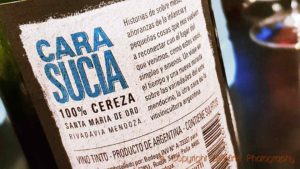 Criolla is the collective name of the grapes in South America that were either brought here as seeds or cuttings by the Spaniards in the 17th century or which are the result of spontaneous crossings that took place in South America between these European grape varieties. Listán negro, listan prieto, moscatel de alejandría and pedro ximénez came to Argentina as seeds and have since stood as parents to a whole lot of criolla grapes. So far, Argentina has done its best to keep these grapes away from the wine tourists. They have often been considered of lower quality. But this may be about to change. The Argentinians now believe that the wine world is ready to be introduced to these unique grapes and that criolla is a legacy that they should take care of and take advantage of.
Criolla is the collective name of the grapes in South America that were either brought here as seeds or cuttings by the Spaniards in the 17th century or which are the result of spontaneous crossings that took place in South America between these European grape varieties. Listán negro, listan prieto, moscatel de alejandría and pedro ximénez came to Argentina as seeds and have since stood as parents to a whole lot of criolla grapes. So far, Argentina has done its best to keep these grapes away from the wine tourists. They have often been considered of lower quality. But this may be about to change. The Argentinians now believe that the wine world is ready to be introduced to these unique grapes and that criolla is a legacy that they should take care of and take advantage of.
The only criolla grape known on export markets today is the white torrontés which has become something of a trendy grape in Argentina. The parents are listan prieto and muscat d’alexandrie which explains the aromatic character. In certain wine shops in Mendoza you will also find criolla chica which is another name for listan prieto. All other criollas (such as criolla grande and criolla cereza) are crosses that occurred in Argentina. The criolla grapes give light, fruity and easy-drinking wines, just what many people want today. Read more about criolla in Argentina here: winesofargentina
Travel: Come with us on a wine tour to Argentina and Chile.
Beaujolais genius Georges Dubœuf dies at 86
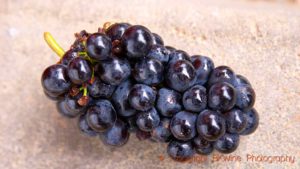 The greatest of them all in Beaujolais, Georges Dubœuf, has passed away. Beaujolais has lost a great promotor. Of course, his wines will continue to thrive through his son Franck. Georges Duboeuf was born into a winemaking family and he was only 18 years old when he started working full time with wine. He successfully sold the family’s wines to well-known restaurants in Paris and soon he had started helping local wine farmers with bottling and selling their wines. In 1964 he founded Les Vins Georges Dubœuf, which later, through hard work and many tours around the world, became world-famous. He was an avid advocate of festivities around Beaujolais Nouveau.
The greatest of them all in Beaujolais, Georges Dubœuf, has passed away. Beaujolais has lost a great promotor. Of course, his wines will continue to thrive through his son Franck. Georges Duboeuf was born into a winemaking family and he was only 18 years old when he started working full time with wine. He successfully sold the family’s wines to well-known restaurants in Paris and soon he had started helping local wine farmers with bottling and selling their wines. In 1964 he founded Les Vins Georges Dubœuf, which later, through hard work and many tours around the world, became world-famous. He was an avid advocate of festivities around Beaujolais Nouveau.
George Duboeuf is a strong brand in many export markets, perhaps even a stronger brand than Beaujolais. Tirelessly, he has helped the more than 300 growers with whom the company works through the crises that the region has had over the years. Right now, Beaujolais seems to be looking towards a bright future. Consumers are again appreciating the fruity, juicy and quite unique style of Beaujolais. Nothing tastes quite like a Gamay.
Can you tell which grape variety is which in the vineyard?
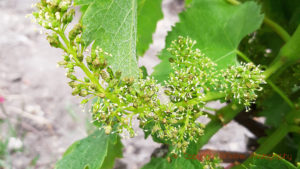 People sometimes wonder how you can tell the difference between one grape variety and another in a vineyard. After all, they look pretty much the same. And the truth is that it’s not easy. Pierre Galet, who passed away on December 30 at the age of 98, could tell them apart without a problem. He was one of the world’s most skilled ampelographer (botanist expert in grape varieties). In the 1950s, he created a system for recognizing varieties by looking at the shape and characteristics of the leaves of the vines, the shoots, the shape of the grape clusters, the shape and colour of the grapes, the number of seeds and by tasting the grapes.
People sometimes wonder how you can tell the difference between one grape variety and another in a vineyard. After all, they look pretty much the same. And the truth is that it’s not easy. Pierre Galet, who passed away on December 30 at the age of 98, could tell them apart without a problem. He was one of the world’s most skilled ampelographer (botanist expert in grape varieties). In the 1950s, he created a system for recognizing varieties by looking at the shape and characteristics of the leaves of the vines, the shoots, the shape of the grape clusters, the shape and colour of the grapes, the number of seeds and by tasting the grapes.
Pierre Galet was an agronomist, oenologist and chemist at the University of Montpellier. He wrote a number of books. His “Dictionnaire encyclopedique des cépages et de leurs synonymes” is a real heavyweight describing around 10,000 different grape varieties. He worked as a consultant around the whole world. Today we identify grape varieties with DNA technology. But that doesn’t help us much if we are standing wondering in the vineyard. It would have been better to have Monsieur Galet by our side. We are particularly proud of that one of our photos at BKWine Photography has been used on the cover of one if Galet’s books. Read more about learning how to identify a grape variety.
Consumers demand more organic wine
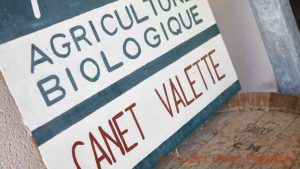 Organic wine continues to increase its sales and market shares. Now, consumer demand drives the three largest wine countries, Italy, Spain and France, to increase their organic surface at a quicker pace, according to a report by Millésime Bio, an organic wine fair that takes place in Montpellier at the end of January. Not least, the demand for organic sparkling is increasing. The consumption of organic bubbles has tripled since 2013.
Organic wine continues to increase its sales and market shares. Now, consumer demand drives the three largest wine countries, Italy, Spain and France, to increase their organic surface at a quicker pace, according to a report by Millésime Bio, an organic wine fair that takes place in Montpellier at the end of January. Not least, the demand for organic sparkling is increasing. The consumption of organic bubbles has tripled since 2013.
The three major wine countries in Europe today have about 10% of their vineyard surface organically certified or under conversion. If you think the figure is small, you have to look at how it has developed. In 2008, Spain had 30,000 hectares, in 2013 57,000 ha, in 2018 89,600 ha and it is estimated to have 160,000 ha by 2023 (out of a total vine surface of ~960,000 ha). France has gone from 5,000 hectares in 1995, to 50,000 ha in 2010, 65,300 ha in 2018 and it is estimated to have 115,000 hectares in 2023 (total surface 790,000 ha). Italy is estimated to have more than 96,000 organic hectares in 2023 (total surface 700,000 ha). There has been a steady increase ever since the introduction of the official and common EU organic certification in 1991.
The Italian and Spanish organic wine production is mainly exported, while the French (and the US and German) is mainly consumed within the country. Read more organic statistics here: millesime-bio.com
Read: Read the true story on what organic wine is in our book.
Features
Features that we have published during the past month, with lots of reading for you.
Anniversary wines to drink in 2020
“It is always a surprise to notice that you are coming to the end of a year – and of a decade – even if, as a fine wine merchant, you are expected to keep an eye on years (or vintages) that come and go. If, like me, you are an English cricket fan, then 2019 was a very good year. The England cricket team won its first World Cup in 44 years of trying.”
One can perhaps add that 2020 will be a great wine year: in French it is pronounced “vin-vin”.
The article is written by Stuart George, guest writer on BKWine Magazine and specialist in fine and rare wines: Twenty20 Vision: Anniversary vintage fine wines in 2020.
It’s time to discover Gigondas
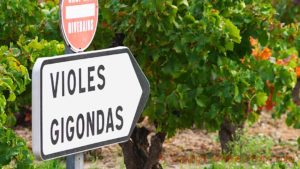 A little brother is always a little brother. Even as he grows up, catching up with his big brother, borrowing his moped and kissing his girlfriend. Anyone who is knowledgeable enough to put Gigondas on the map will then point to neighbouring Châteauneuf du Pape. If the Gigondas vineyards cover 1,230 ha, big brother’s is more than double. At the Swedish monopoly shops, the most expensive bottle of Gigondas costs SEK 499 (~50 euro), while the most expensive from Châteauneuf du Pape is… yes, obviously twice as expensive. Even the stones on the ground are bigger in Châteauneuf du Pape (grands galets, but that’s a different story). But those who have taken a liking to the southern Rhône have long realized the benefit of taking the small road up to the village with the same name as the wine. Gigondas.
A little brother is always a little brother. Even as he grows up, catching up with his big brother, borrowing his moped and kissing his girlfriend. Anyone who is knowledgeable enough to put Gigondas on the map will then point to neighbouring Châteauneuf du Pape. If the Gigondas vineyards cover 1,230 ha, big brother’s is more than double. At the Swedish monopoly shops, the most expensive bottle of Gigondas costs SEK 499 (~50 euro), while the most expensive from Châteauneuf du Pape is… yes, obviously twice as expensive. Even the stones on the ground are bigger in Châteauneuf du Pape (grands galets, but that’s a different story). But those who have taken a liking to the southern Rhône have long realized the benefit of taking the small road up to the village with the same name as the wine. Gigondas.
Read more in Sven-Olof Johansson’s article on BKWine Magazine: Gigondas in the Rhone Valley – the constant underdog that bites.
Pinot Grigio: From Lady Gaga to a new consorzie delle Venezie
 Not all grape varieties are so famous that Lady Gaga writes a song about them, but pinot grigio is. The north-eastern corner of Italy is the regions where most pinot grigio is produced in the whole world. Now the three regions Veneto, Friuli and Trentino are investing in common cause for pinot grigio to keep their place in the limelight.
Not all grape varieties are so famous that Lady Gaga writes a song about them, but pinot grigio is. The north-eastern corner of Italy is the regions where most pinot grigio is produced in the whole world. Now the three regions Veneto, Friuli and Trentino are investing in common cause for pinot grigio to keep their place in the limelight.
Read more on this and on Lady Gaga in Åsa Johansson’s article on BKWine Magazine: Pinot Grigio: From Lady Gaga to a new consorzie delle Venezie.
Our book “Languedoc-Roussillon” named “Book of the Year, Drinks” by Gourmand Awards
 Our latest book “Languedoc-Roussillon, Wines From The South of France” (Languedoc-Roussillon, södra Frankrikes viner) has been named Drinks Book of the Year 2019 (it actually happened a couple of months ago). Not the best wine book as such, but the best book in Sweden about any kind of drink, wine, spirits, tea, coffee, water. So that must include wine! Or as it is called in the official text Book of the Year – Best In All Categories in Sweden for books on beverages. We are very proud and grateful for this award.
Our latest book “Languedoc-Roussillon, Wines From The South of France” (Languedoc-Roussillon, södra Frankrikes viner) has been named Drinks Book of the Year 2019 (it actually happened a couple of months ago). Not the best wine book as such, but the best book in Sweden about any kind of drink, wine, spirits, tea, coffee, water. So that must include wine! Or as it is called in the official text Book of the Year – Best In All Categories in Sweden for books on beverages. We are very proud and grateful for this award.
Read more about this fantastic award on BKWine Magazine: Our book “Languedoc-Roussillon” named “Book of the Year, Drinks” by Gourmand Awards.
8 of our favourites in the Douro Valley | Britt on Forbes
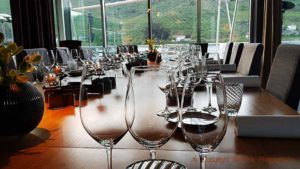 This wine is called Abandonado”, says Catarina Sousa at Quinta da Gaivosa. “It comes from a very steep, even dangerous, slope of rocky schist soil with vines planted 85 years ago. It was abandoned (hence the name of the wine) for a long time; it was too hard to work.” Now Domingos Alves de Sousa and his family are again working this plot and they make a stunning wine from it. The wine producers in the Douro Valley are used to hard work. The steep schist slopes, often terraced, that offer such breath-taking views to the wine tourists mean hard conditions for the workers in the vineyards. Most work has to be done manually, the harvest not least. To see the spectacular, magnificent landscape is just one of the reasons to go to the Douro Valley in northern Portugal.
This wine is called Abandonado”, says Catarina Sousa at Quinta da Gaivosa. “It comes from a very steep, even dangerous, slope of rocky schist soil with vines planted 85 years ago. It was abandoned (hence the name of the wine) for a long time; it was too hard to work.” Now Domingos Alves de Sousa and his family are again working this plot and they make a stunning wine from it. The wine producers in the Douro Valley are used to hard work. The steep schist slopes, often terraced, that offer such breath-taking views to the wine tourists mean hard conditions for the workers in the vineyards. Most work has to be done manually, the harvest not least. To see the spectacular, magnificent landscape is just one of the reasons to go to the Douro Valley in northern Portugal.
Read more on Britt’s article on BKWine Magazine, originally published on Forbes: 8 Reasons To Visit The Dramatic Douro Valley In Portugal.
Wine tours
Some information about current and future wine tours with BKWine.
Bordeaux, prestigious but not homogenous | wine tour
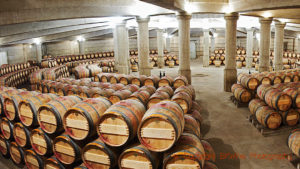 Bordeaux is one of France’s largest wine regions and here you will find wines in all price ranges. Really all. Some Bordeaux wines (but luckily only very few) are today more luxury products than wines. During our tours in Bordeaux we will show you different types of chateaux, all of very high quality but different. Some will be Grand Cru Classé 1855 chateaux others will be small family farms with great ambitions. You don’t want to go to Bordeaux and ONLY visit the celebrity crus classés; that will be very boring, trust us, we’ve been there, and you will miss much of what Bordeaux is really about, the dynamism, the real wine, the region’s personality, and the people. On our tour you will get a feeling for what is like being a winegrower in this prestigious region. Our lunches at the chateaux are fabulous gourmet meals that will stay in your memory.
Bordeaux is one of France’s largest wine regions and here you will find wines in all price ranges. Really all. Some Bordeaux wines (but luckily only very few) are today more luxury products than wines. During our tours in Bordeaux we will show you different types of chateaux, all of very high quality but different. Some will be Grand Cru Classé 1855 chateaux others will be small family farms with great ambitions. You don’t want to go to Bordeaux and ONLY visit the celebrity crus classés; that will be very boring, trust us, we’ve been there, and you will miss much of what Bordeaux is really about, the dynamism, the real wine, the region’s personality, and the people. On our tour you will get a feeling for what is like being a winegrower in this prestigious region. Our lunches at the chateaux are fabulous gourmet meals that will stay in your memory.
We have two tours to Bordeaux during 2020:
Champagne, champagne dining and Champagne harvest mood| wine tour
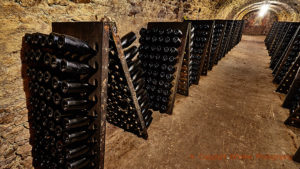 Having champagne throughout your meal is not that common. But it is lovely and something you can definitely get used to. Quite rapidly. But don’t worry, you will have several opportunities during our wine tour in Champagne and maybe you can bring some inspiration back home with you. There is such an incredible variation in the characters of different champagnes so it can be paired with almost any kind of food. In the middle of September, the grapes are fully ripe and some of them might even have been picked. It is a hectic time with sometimes curious traffic jams on the small country roads (plenty of harvesters around…) but also a very enjoyable time to visit the vineyards in Champagne.
Having champagne throughout your meal is not that common. But it is lovely and something you can definitely get used to. Quite rapidly. But don’t worry, you will have several opportunities during our wine tour in Champagne and maybe you can bring some inspiration back home with you. There is such an incredible variation in the characters of different champagnes so it can be paired with almost any kind of food. In the middle of September, the grapes are fully ripe and some of them might even have been picked. It is a hectic time with sometimes curious traffic jams on the small country roads (plenty of harvesters around…) but also a very enjoyable time to visit the vineyards in Champagne.
Winter wine torus 2021 with plenty of sunshine, excellent wines and magnificent landscapes – and unforgettable experiences
From January to March 2021, we offer you three very special tours to destinations far away. Tours that will give you great wine and food experiences. But we also give you time for an in-depth look at the different countries’ nature, culture and much more. You can hardly get a better introduction, an insider’s view, to these four (!) countries. All are wine countries that have much to offer. On export markets you often see a limited range of what these really dynamic and exciting countries have to offer. On site you will discover extraordinary wines, delicious food, beautiful landscapes, culture, sunshine and fantastic weather. Three exceptional wine tours to four fascinating wine countries that will each be a memory for life.
- South America, Chile and Argentina, January 18–31, 2021
- New Zealand, February 18–March 5, 2021
- South Africa, March 17–26, 2021
See details on BKWine Wine Tours .
Don’t be an egoist! Share with your friends and other wine enthusiasts! Forward the Brief to your friends! Suggest that they sign up for a free subscription !
© Copyright BKWine








